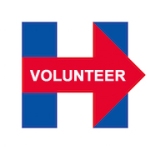Chelsea Clinton on How to Craft the Most Persuasive Pitch
If you want to motivate people to take action, you can't rely on data alone.
Statistics can be incredibly illuminating--but numbers alone rarely change hearts and minds.
- Chelsea Clinton spoke as the keynote at HubSpot's INBOUND conference on Friday, September 11. IMAGE: Getty Images
That, at least, is the experience of Chelsea Clinton, vice chair of the Clinton Foundation, a global NGO.
Giving the keynote address on Friday at HubSpot's INBOUND conference in Boston, Clinton began by presenting data points about rights and opportunities for women and girls worldwide. Sobering and intriguing as the data was, Clinton noted it often takes more than data to persuade people and companies to open wallets or amend policies.
For example, she cited how the nation of Malawi banned childhood marriage in February. Though knowledge and data abounded about the perils of pre-teen marriages, the real key to banning the practice, said Clinton, was the personal, storytelling-based activism of Memory Banda, 18, whose younger sister, Mercy, was married at age 11 to a man in his thirties. "Impact starts with understanding what the stories are," said Clinton. "Memory does more in Malawi than we do."
Read more >>>>In a recent opinion piece here, I noted that important information can be flushed down a Facebook page when participants fail to read and evaluate the items already posted on the page before placing the item they are posting. A new item drives everything else downscreen. Important stories and announcements share space with memes, signs, slogans, and repetitive duplication of items that are already there and might not be of current import.
I decided to look at some data derived from a typical Hillary Clinton Facebook group over a two-day period. Here is what I found.
There were 34 entries. 22 of these (65%) were posted by 6 different men. 12 of these (35%) were posted by 8 different women.
I divided content into pictures which includes memes and signs, and links to articles including announcements.
22 posts (65%) were links to articles and announcements of current interest or import. 12 posts (35%) were pictures one of which had immediate currency. Most of those were memes with slogans and statements. One picture led to a personal story. That was the only picture posted by a woman. The other 11 pictures - memes - were posted by men.
Among the men, then, we find an equal propensity to post memes and links to information. Women were 90% more likely to link to articles, information, i.e. to text. If we take into account that the one picture posted by a woman led to a personal account, women showed a 100% propensity toward dense text, while men were only 50% likely to link to dense text.
This is how we are sharing our Hillary Clinton information. Women are sharing stories, as Chelsea recommends. Men are too, but half the time men are depending on something that looks like a story board for a movie - memes. Are men from Mars and women from Venus?
There is nothing scientific in how this data was collected. It's just a two-day sample off a Facebook page, but it does say something about how we are communicating. It is nothing more than an observation. Are we doing this the best way? Are we getting it over the plate? I have no answer.

I think for Hillary, we all want to pitch like Mo'Ne Davis. I am pretty sure that does not mean an underhand pitch. Maybe we women need to learn to be a little more graphic.
Event announcements are far more attractive to the eye using graphics. If you do not have Photoshop, you can download Gimp for free. Maybe we need to pitch a little more like the boys do.
Note that there is a lot not taken into account here. I did not count likes or comments at all. Where there were links there was no way to tell if likes led to clicks, and, if they did, whether individuals read the articles or to what degree people were simply reacting to a header. We do not know the degree to which links to articles were treated like memes, in other words. If they were, though, that would validate further the use of graphics.
The point was more to figure out what our pitching technique was. As I said, I do not know whether we are getting it over the plate.



